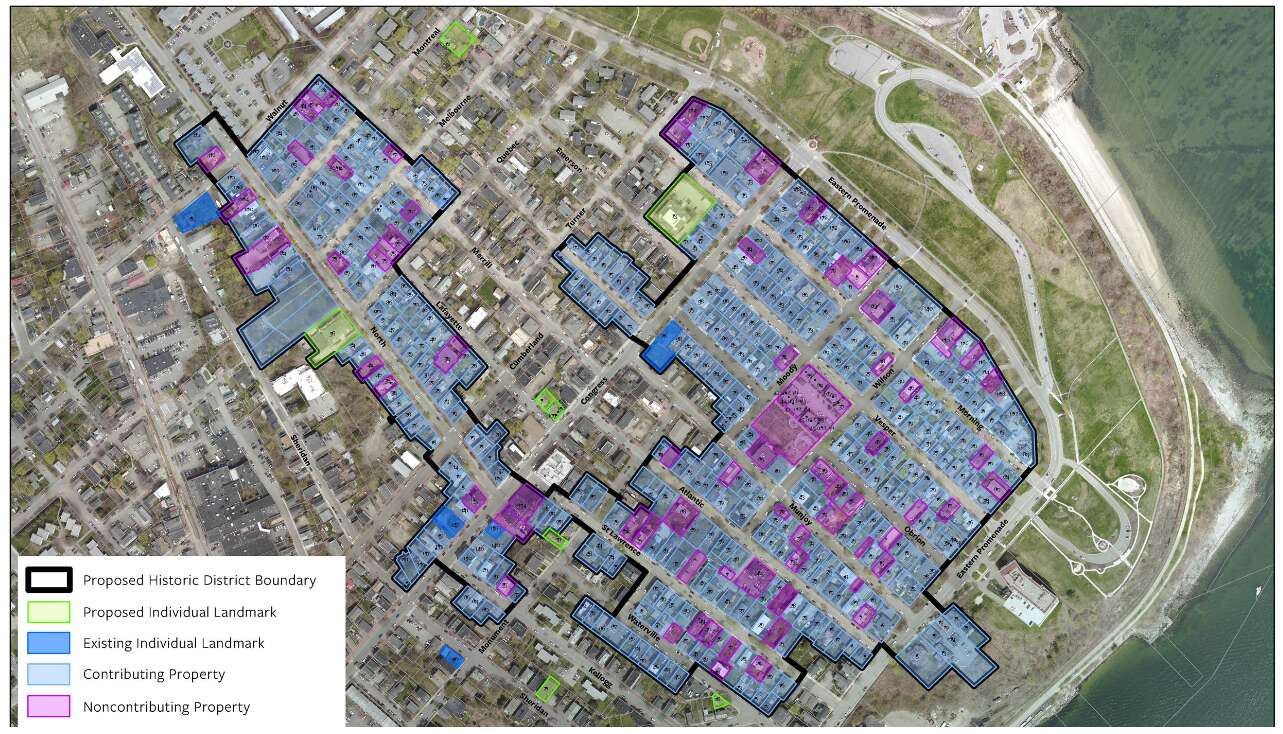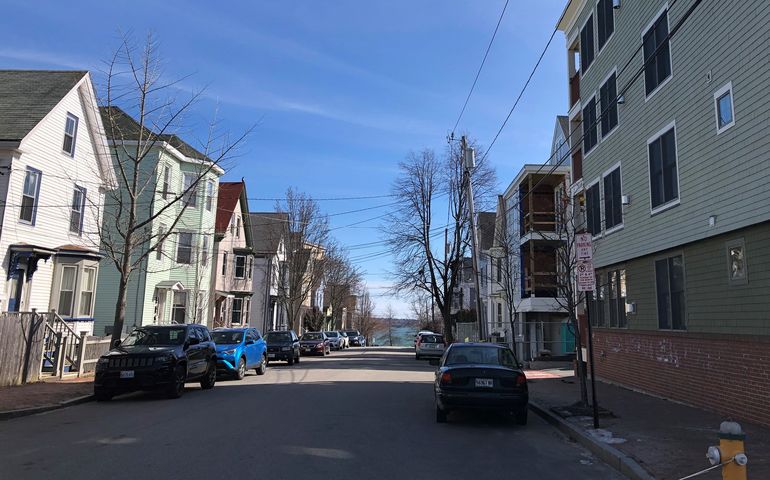
Portland Planning Board narrowly recommends Munjoy Hill Historic District
 Photo / Maureen Milliken
The Portland Planning Board recommended, by a 4-3 vote, that a historic district be established in the city's Munjoy Hill neighborhood.
Photo / Maureen Milliken
The Portland Planning Board recommended, by a 4-3 vote, that a historic district be established in the city's Munjoy Hill neighborhood.
The Portland Planning Board on Tuesday narrowly recommended the creation of a historic district for the Munjoy Hill neighborhood that would include nearly 400 conforming structures, most of them residential.
The board agreed 4 to 3 to recommend the district, with those on both sides of the vote saying it doesn't solve issues of affordable housing and availability of home ownership, concerns expressed by residents as well as board members.
The vote had been postponed from March 17, when the city shut down because of the COVID-19 pandemic, and the board discussed the issue for over two hours before taking the vote. The final decision on the district is up to the City Council.
The recommendation comes after several years of debate, zoning changes and an overlay district in 2018 that slowed construction until issues could be worked out stemming from concerns about buildings being torn down and larger condominium buildings going up in their place in the neighborhood's tight lots.
Board members on both sides of the vote said they struggled with their decision, and also said the city must look beyond what a historic district can do to solve issues of affordable housing, housing values and inclusion. Those in favor said that it meets the criteria for such a district and also the city comprehensive plan goals for historic preservation. Voting in favor were Maggie Stanley, David Silk, Austin Smith and Bob Dunphey.
Vice Chairman Stanley said there are studies that show historic districts have kept affordability in check, and others that show a district has made housing prices go up. "It depends on the neighborhood, it depends on the city. There's not one answer across the board, across America, about what historic preservation is or isn't going to do for your own community."
She said the proposal meets the city comprehensive plan goals as far as focusing on authenticity, but the affordable housing issue isn't the job of historic preservation and the district won't solve affordable housing issues, though it may preserve some rental units, add some and prevent tear-downs.
"If we want to look at those kinds of things we need to take a look as a city at inclusionary zoning, density requirements, the underlying zoning," she said. "And I really want to take a look at the overlay zone again and make sure that through approving this district and creating the neighborhoods that we want really make sure we preserve and do smart development sensitive development we're not overreaching." She said there is more land and open lots in parts of the city that aren't in the district "and we really need to look at that."
Silk stressed the need for the city to go beyond the historic district to solve the bigger issues. "The real add-on the planning brings to the equation for the council is, 'OK, we know historic preservation is a factor of the [comprehensive plan], but what's the impact this is going to have on other factors of the [plan]?" He said the issues of housing access and barriers come under other parts of the plan, not historic preservation.

'Not the right tool'
Those opposed to the district — Chairman Brandon Mazer and members Sean Dundon and Marpheen Chann — cited concerns about the availability of housing, both for renters and buyers, and how the district will make that worse, not better.
"There's a lot of questions I have, when referring to the [comprehensive plan], with racial equity, future growth, racial equity that filter through various pillars of the comp plan," said Chann. "Some extra time spent on this to make sure we're actually doing this right is not much to act for in the grand scheme of things."
Earlier in the meeting, he said, "Black, brown, indigenous homeowners, who, based on the current data across the country, their home-ownership rates are abysmal, especially for our Black population. My concern is do we want to add this next step to the process for homeowners who might already be at a disadvantage? How is this adding another layer to put them back even farther in our race to equalize the playing field?"
Mazer, like Stanley, said he's "struggled" with the district concept and only came to his decision recently.
"The hill has always been the area of the city that has ebbed and flowed with economic changes, and that's what is the hill, in a lot of ways," he said. "We are in a different economic time."
Mazer also said the scope of the district bothered him. "I find it hard to see a district with 427 parcels where nearly 90% are contributing."
He also said the city has made an effort not to "silo" planning solutions, but "Here we are, siloing a historic district" rather than looking at it in conjunction with the overlay, which was put in place as a temporary solution. "I'm not saying never to a historic district, I just don't think it's the right policy or the right tool right now in the right context," Mazer said.
He and Dundon both said the historic preservation district is not the right tool to address the concerns in the neighborhood.
Dundon also said there's been no room for renters' voices in the discussion.
The district was approved by the city's Historic Preservation Board in November. It includes 427 parcels, of which 376, or 88% are classified as "contributing," which means that they meet the criteria as far as age, and also have retained historic features. Overall, the district represents 49% of Munjoy Hill’s building stock, according to the city.
Most of the proposed historic district property is in an R-6 residential zone, but it also includes 10 buildings in the neighborhood’s B-1 or B-1b business zones. Two of those buildings are previously designated landmarks.
Property owners of contributing structures would have to get approval from the city before making any improvements or alterations that can be seen from a public way.










0 Comments